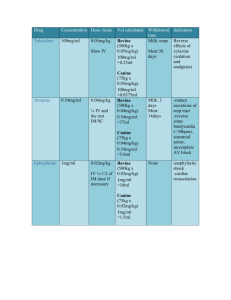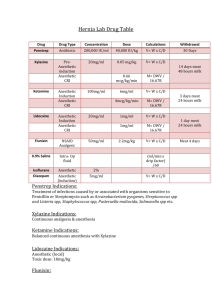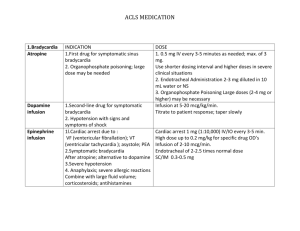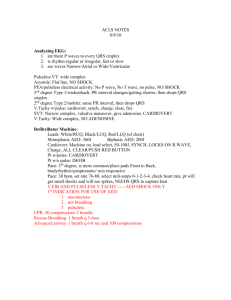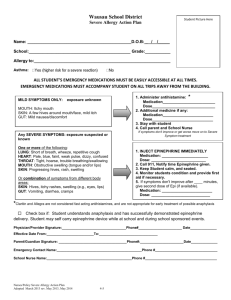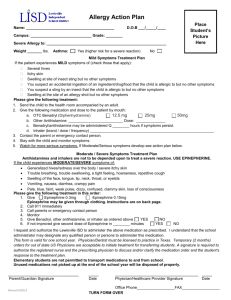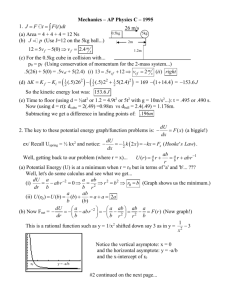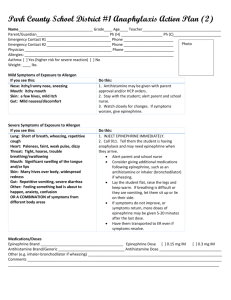Emergency Drugs
advertisement
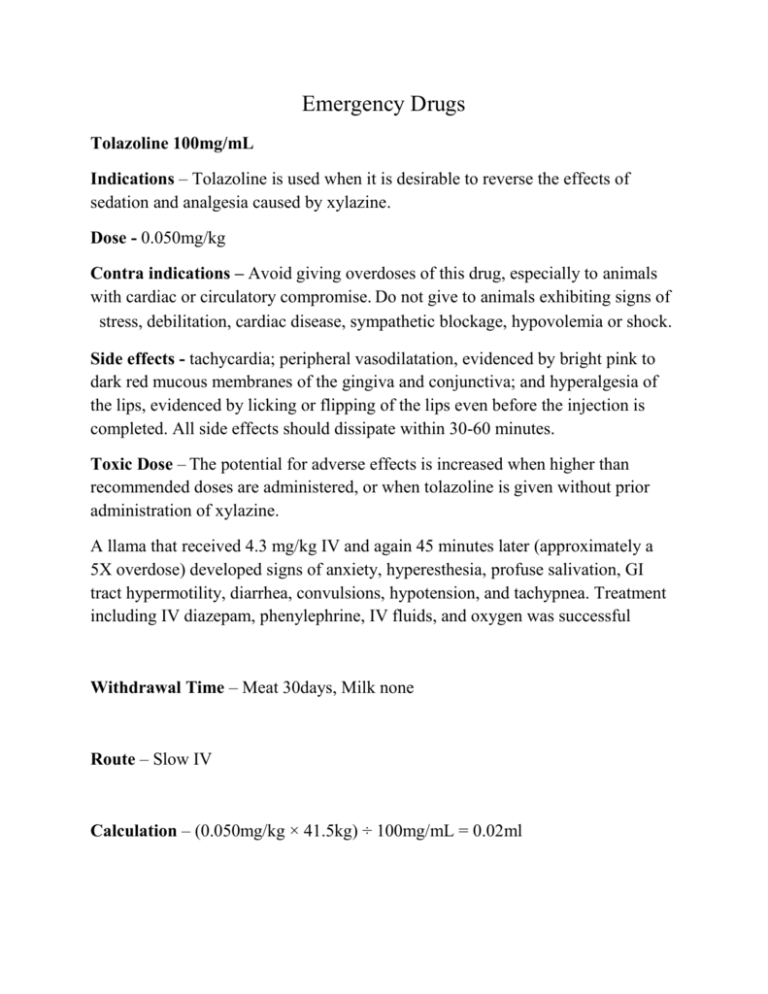
Emergency Drugs Tolazoline 100mg/mL Indications – Tolazoline is used when it is desirable to reverse the effects of sedation and analgesia caused by xylazine. Dose - 0.050mg/kg Contra indications – Avoid giving overdoses of this drug, especially to animals with cardiac or circulatory compromise. Do not give to animals exhibiting signs of stress, debilitation, cardiac disease, sympathetic blockage, hypovolemia or shock. Side effects - tachycardia; peripheral vasodilatation, evidenced by bright pink to dark red mucous membranes of the gingiva and conjunctiva; and hyperalgesia of the lips, evidenced by licking or flipping of the lips even before the injection is completed. All side effects should dissipate within 30-60 minutes. Toxic Dose – The potential for adverse effects is increased when higher than recommended doses are administered, or when tolazoline is given without prior administration of xylazine. A llama that received 4.3 mg/kg IV and again 45 minutes later (approximately a 5X overdose) developed signs of anxiety, hyperesthesia, profuse salivation, GI tract hypermotility, diarrhea, convulsions, hypotension, and tachypnea. Treatment including IV diazepam, phenylephrine, IV fluids, and oxygen was successful Withdrawal Time – Meat 30days, Milk none Route – Slow IV Calculation – (0.050mg/kg × 41.5kg) ÷ 100mg/mL = 0.02ml Atropine 0.54mg/mL Indications – Preanesthetic to prevent or reduce secretions of the respiratory tract. Treat sinus bradycardia, sinoatrial arrest, and incomplete AV block. Differentiate vagally-mediated bradycardia for other causes. Should be used if bradycardia is <30bpm. Dose - 0.04mg/kg Contra indications – Contraindicated in conditions where anticholinergic effects would be detrimental (e.g., narrow angle glaucoma, tachycardias, ileus, urinary obstruction, etc.) Side effects - GI effects can include dry mouth (xerostomia), dysphagia, constipation, vomiting, and thirst. GU effects may include urinary retention or hesitancy. CNS effects may include stimulation, drowsiness, ataxia, seizures, respiratory depression, etc. Ophthalmic effects include blurred vision, pupil dilation, cycloplegia, and photophobia. Cardiovascular effects include sinus tachycardia (at higher doses), bradycardia (initially or at very low doses), hypertension, hypotension, arrhythmias (ectopic complexes), and circulatory failure. Withdrawal Time – Meat 14 days, Milk 3 days. Route – Give ¼ of the dose IV and the remainder IM or SC. Calculation – (0.04mg/kg × 41.5kg) ÷ 0.54mg/mL = 3.07ml Epinephrine 1mg/mL Indications – Epinephrine is a powerful, quick-acting vaso- constrictor for emergency use in the treatment of anaphylactic shock. Also for cardiac resuscitation Dose - 0.02mg/kg Contra indications – Narrow-angle glaucoma, hypersensitivity to epinephrine, shock due to non-anaphylactoid causes, during general anesthesia with halogenated hydrocarbons, during labor (may delay the second stage), cardiac dilatation or coronary insufficiency; cases where vasopressor drugs are contraindicated (e.g., thyrotoxicosis, diabetes, hypertension, toxemia of pregnancy) Epinephrine may compromise circulation if injected into areas with end artery blood flow (e.g. ears, digits, tail) and therefore, this product should not be used in these areas. Side effects - Anxiety, tremor, excitability, vomiting,hypertension (overdosage), arrhythmias, hyperuricemia, & lactic acidosis (prolonged use or overdosage) Repeated injections can cause necrosis at the injection site. Withdrawal Time – None Route – IV injection is not recommended, but if it is found to be clinically necessary, ¼ to ½ of the IM dose should be used. Calculation – (0.02mg/kg × 41.5kg) ÷ 1mg/mL = 0.83ml Intra – op Fluids (0.9% saline) Calculation - (10mg/kg × 41.5kg) ÷ (60x60) x 20 drops/mL = 2.3drops/sec
